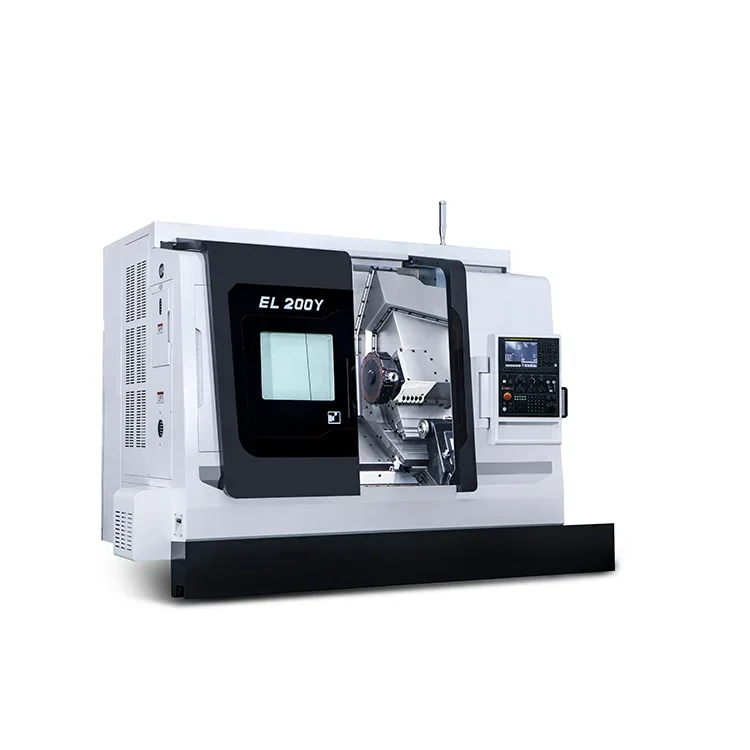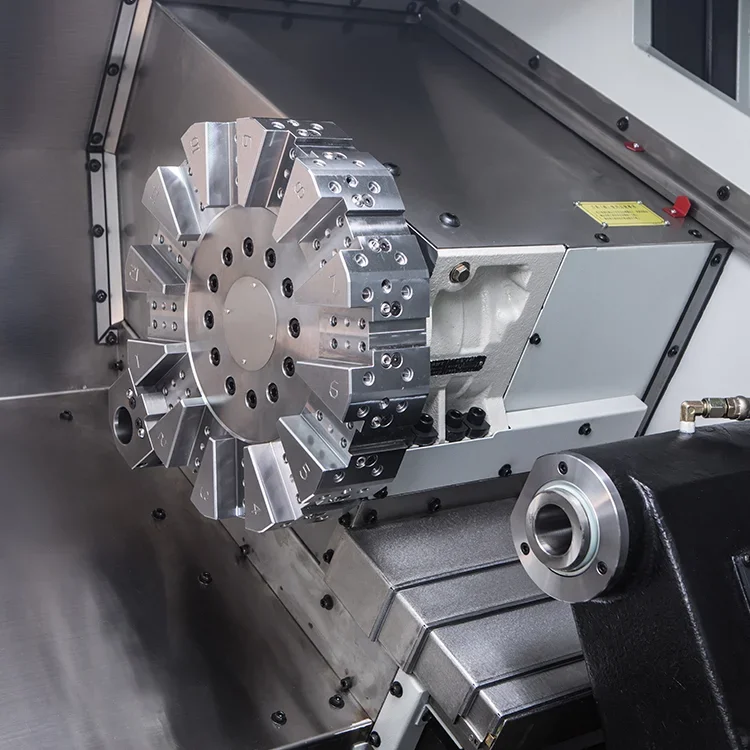Are you looking to improve the production efficiency of your machining operations? Look no further than CNC lathes with automation capabilities. These machines are designed to streamline the manufacturing process, reducing labor costs and increasing output. But how exactly does the degree of automation affect production efficiency? In this article, we'll explore the different types of CNC lathes and weigh the pros and cons of automation in order to help you make an informed decision for your business. So buckle up as we dive into the world of automated CNC lathes!
What is a CNC lathe?
A CNC lathe, or computer numerical control lathe, is a machine tool used for shaping metal and other materials. It operates with precision accuracy by removing material from the workpiece using cutting tools that are controlled by a computer program.Unlike traditional lathes operated manually, CNC lathes use automation to increase efficiency and productivity. This means that operators can produce parts more quickly while maintaining consistent quality.CNC lathes come in different sizes ranging from small benchtop models to large industrial-grade machines. They also vary in their level of automation - some require manual loading and unloading of the workpieces while others feature automatic part transfer systems.CNC lathes offer many advantages over traditional machining methods such as reduced setup time, increased accuracy, and improved safety. As technology continues to advance, we can expect even greater levels of automation in these powerful machines.

How does automation affect production efficiency?
Automation is a game-changer for production efficiency in the manufacturing industry. By automating CNC lathes, manufacturers can reduce their dependency on human labor and increase the precision and accuracy of their products. CNC machines are capable of running 24/7 without supervision, which means that they can produce more parts in less time than manual machines.One benefit of automation is the reduction in errors caused by human intervention. Automated machines can perform repetitive tasks with consistent speed and accuracy, thereby improving product quality. Additionally, automated machines have built-in sensors that detect any abnormalities during production. This allows for quick detection and correction of issues before they lead to wasted materials or increased downtime.Another advantage of automation is faster turnaround times for orders. With automated CNC lathes, manufacturers can complete jobs faster because there are no breaks or delays due to fatigue or other work-related issues faced by employees working long hours manually operating regular lathes.Automation reduces costs associated with labor-intensive operations such as training new workers who need to be taught how to operate traditional lathes effectively correctly over an extended period.Automation has significantly impacted production efficiency positively through its ability to run continuously without shutdowns while reducing errors caused by human intervention allowing experts more time for other important roles hence increasing productivity levels leading to higher profits all around businesses implementing this technology today!
The different types of CNC lathes
There are several different types of CNC lathes, each with their own unique features and capabilities. The most common type is the 2-axis lathe, which can perform turning operations on both the X and Z axes. These machines are perfect for simple components that require minimal setup time and programming.For more complex parts, a multi-axis lathe may be necessary. These machines have additional axes of motion which allow for more intricate machining operations such as drilling or milling. They also tend to have larger work envelopes which make them ideal for larger parts.
Another popular variant is the Swiss-style lathe, which utilizes a sliding headstock to achieve extremely precise tolerances at high speeds. This type of machine is commonly used in watchmaking or other micro-machining applications where precision is critical.There are hybrid lathes that combine traditional manual machining with CNC automation. These machines offer greater flexibility than fully automated systems while still providing some level of control over the manufacturing process.No matter what type of CNC lathe you choose, it's important to select one that meets your specific needs and budget requirements. With so many options available on the market today, there's sure to be a machine out there that's right for you!

Pros and cons of automation
Pros and cons of automation are vital to consider when discussing CNC lathes. On one hand, automation can significantly improve production efficiency by reducing human error and increasing the speed of operations. Automated systems also allow for continuous operation without the need for operator intervention, leading to higher levels of productivity.However, there are some downsides to automation as well. One major concern is the initial cost of implementing automated systems, which can be quite high. Additionally, maintenance costs may increase due to complex machinery that requires specialized knowledge and skills.Another potential drawback is a lack of flexibility in production processes with certain types of automation systems. Once programmed, it may be difficult or time-consuming to make changes without impacting overall efficiency.Furthermore, reliance on technology creates a risk for system failures or downtime which could lead to significant losses in production output if not promptly addressed.While there are clear advantages to automation in terms of increased efficiency and productivity gains; businesses should carefully weigh these benefits against potential drawbacks before making any decisions regarding implementation.
Conclusion
The degree of automation in CNC lathes can significantly affect production efficiency. The different types of CNC lathes provide varying levels of automation, with each having its own set of advantages and disadvantages.Automating a non-automated lathe may require significant investment, but it can bring long-term benefits such as increased productivity and reduced labor costs. Working closely with a reputable supplier or manufacturer can help you make an informed decision that ultimately leads to increased production efficiency and profitability for your business.Please contact us,if you need.jason@wxfagor.com

